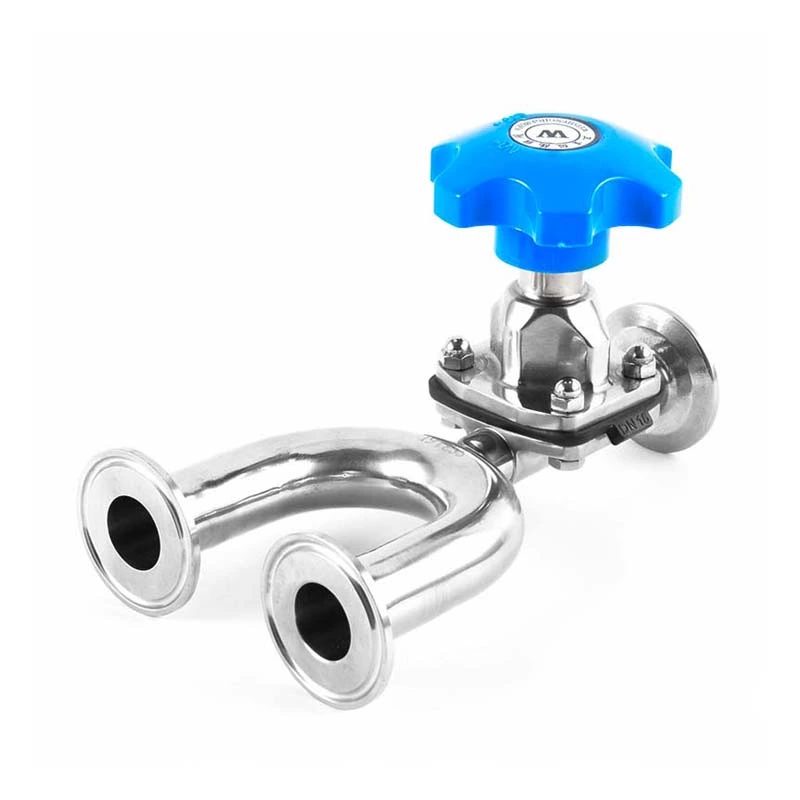Sealing Surface Grinding Method Of Sanitary Valves
Sanitary Valve Sealing surface grinding method
In order to ensure the long service life of the sealing surface of the sanitary valve, the sealing surface must be ground. There are two grinding methods. One is manual grinding, which is time-consuming and labor-intensive, but it is fine. The other is mechanical grinding, which greatly reduces time and manpower and material resources.
① Manual grinding of the valve body sealing surface. The valve body sealing surface is located in the inner cavity of the valve body, which is difficult to grind. Usually, a disc-shaped grinding tool with a square hole is used, placed on the sealing surface of the inner cavity, and then a long-handled handle with a square head is used to drive the grinding disc for grinding. There are cylindrical bosses or guide gaskets on the grinding disc to prevent the grinding tool from partially leaving the annular sealing surface during the grinding process, causing uneven grinding. Figure 8-6-5 is a schematic diagram of manual grinding of the valve body of the gate valve and the stop valve.
Before manually grinding the valve body sealing surface, the working surface of the grinding tool should be wiped clean with kerosene or gasoline, and the flash and burrs on the valve body sealing surface should be removed, and then a layer of abrasive should be applied on the sealing surface. When the grinding tool is placed in the inner cavity of the valve body, it should be carefully fitted on the sealing surface, and then the long-handled handle should be used to rotate the grinding disc in the forward and reverse directions. First rotate 1800 clockwise, then rotate 900 counterclockwise, and repeat this process. Generally, the abrasive particles in the grinding agent will be blunt after more than ten rotations, so the grinding disc should be lifted frequently to add new grinding agent.
The grinding pressure should be uniform and not too large. The pressure can be larger during rough grinding; it should be smaller during fine grinding. Be careful not to partially detach the grinding tool from the sealing surface due to the pressure applied.
After grinding for a period of time, check the unevenness of the workpiece. At this time, the grinding tool can be taken out, the sealing surface can be cleaned with kerosene or gasoline, and then the disc-shaped inspection flat plate can be gently placed on the sealing surface and gently dragged by hand. After taking out the flat plate, the contact marks on the sealing surface can be observed. When the contact marks are evenly shown on the annular sealing surface, and the ratio of the minimum radial contact width to the sealing surface width (i.e., the fit between the sealing surface and the inspection flat plate) reaches the value specified in the process, the unevenness can be considered qualified.
② Manual grinding of the sealing surface of the gate and valve disc. The sealing surface of the gate, valve disc and valve seat can be manually ground using a grinding plate. Before work, first apply a layer of abrasive evenly on the clean plate. After the workpiece is attached to the plate, it can be rotated by hand while making linear motion, as shown in Figure 8-6-6, or making an 8-shaped motion. Since the grinding motion direction is constantly changed, the abrasive particles are constantly grinding in the new direction, so the grinding efficiency can be improved.
In order to avoid uneven wear of the grinding plate, do not always grind in the middle of the plate, but constantly change the position on the entire surface of the plate, otherwise the grinding plate will quickly lose the plane accuracy.
The manual grinding of the sealing surface of the sanitary valve only uses simple grinding tools. Manual grinding generally adopts wet grinding. During the wet grinding process, thin abrasives should be added frequently to wash away the blunted abrasive grains from the working surface and continuously add new abrasive grains to obtain higher grinding efficiency. For sealing surfaces with particularly high requirements for precision and finish, sand pressing plates are sometimes used for dry grinding.
